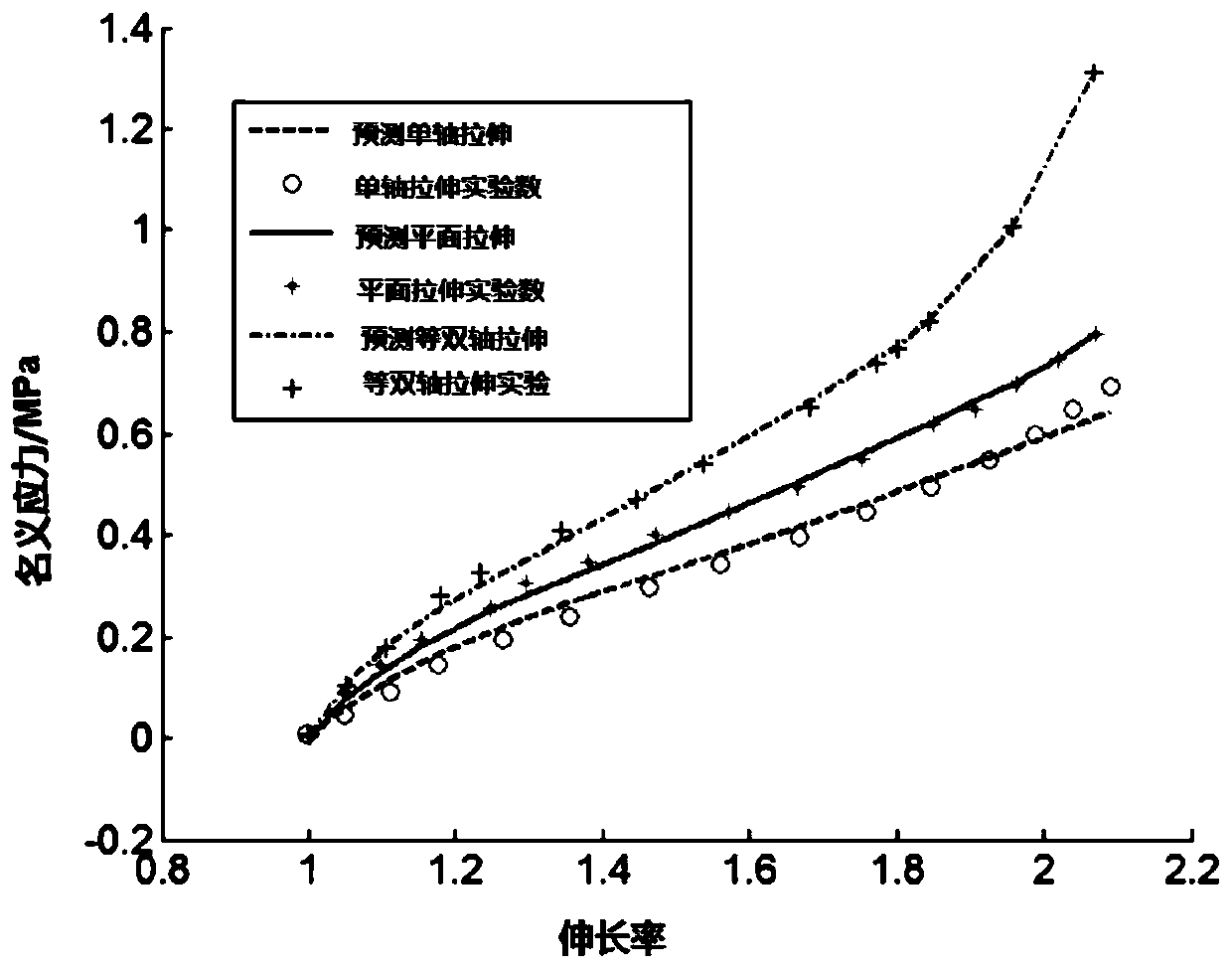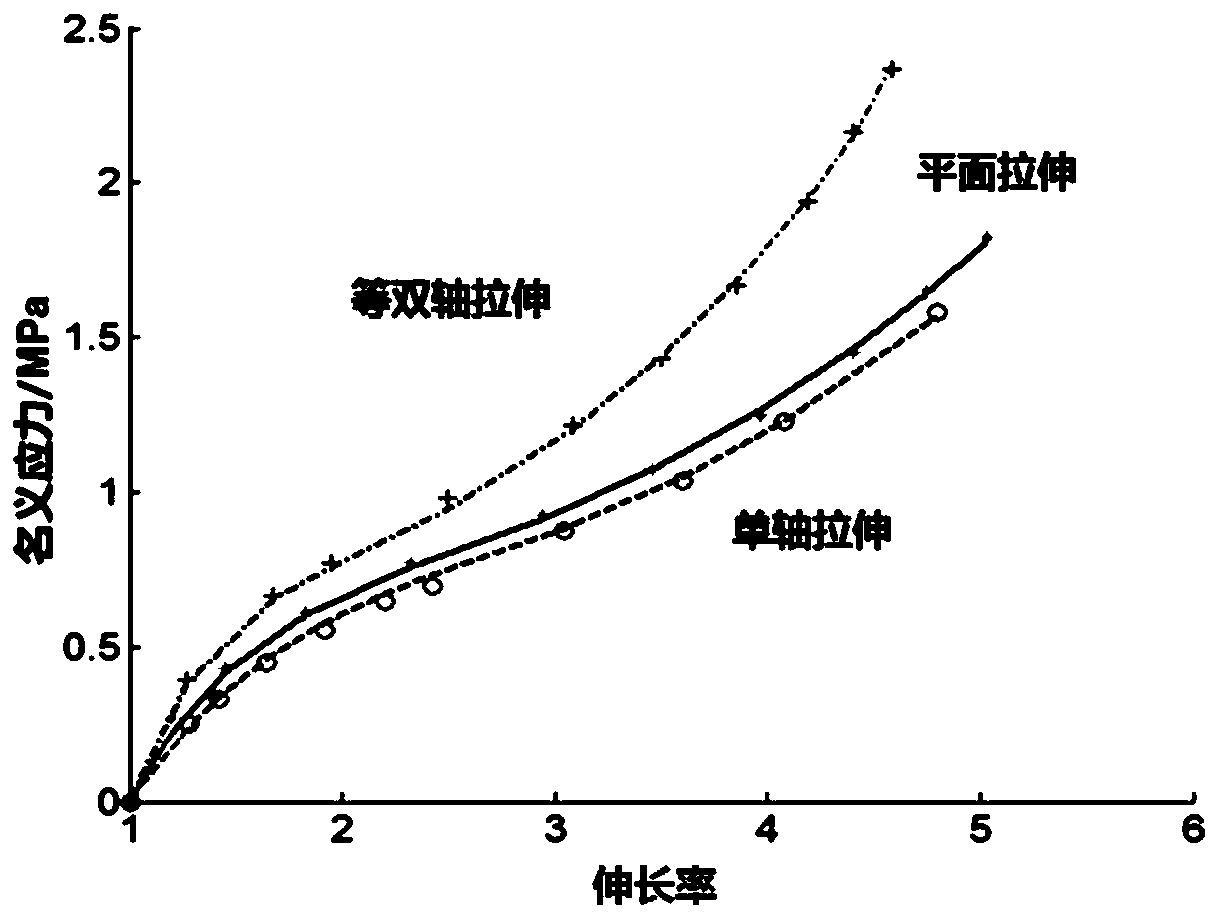A method for constructing isotropic incompressible hyperelastic constitutive model and its application
An isotropic and hyperelastic technology, applied in the field of engineering and scientific applications, can solve problems such as unreliability and low model fitting accuracy, achieve high reliability, save material multi-axial test costs, high engineering application value and calculation The effect of mechanics using foreground
- Summary
- Abstract
- Description
- Claims
- Application Information
AI Technical Summary
Problems solved by technology
Method used
Image
Examples
Embodiment 1
[0030] This embodiment proposes a relationship model between the stress-elongation function and the plane tensile stress-elongation function in any plane deformation state. Through this relationship model, the constitutive relationship of rubber-like incompressible hyperelastic materials can be directly established and identified Model parameters, specifically in the following form:
[0031]
[0032] In the formula, T i In any triaxial stress state (λ i ,λ j ,λ k ) under λ i Nominal stress in direction; T i (λ i ,λ j ) means that in the plane stress state (λ i ,λ j ,1 / λ i lambda j ) under λ i Nominal stress in direction (force / initial area); λ i ,λ j ,λ k are the principal elongation (λ i ,λ j In the state of plane stress, it is the first and second principal elongation), the subscripts i, j, k are an arrangement of numbers 1, 2, and 3; k is a material parameter to be identified, in general, it can be set which is equal to 0, at the elongation λ j When it ...
Embodiment 2
[0056] The incompressible hyperelastic constitutive model of this embodiment is basically the same as that of Embodiment 1, and the specific process of using the constitutive model of this embodiment for parameter identification is as follows:
[0057] 1) Perform all three types of material experiments to obtain nominal stress-elongation curves during the experiment, such as figure 2 The uniaxial tensile curves and planar tensile curves shown in ;
[0058] 2) Substituting into the model of formula (1) to directly fit all parameters;
[0059] 3) The complete constitutive model of the material is obtained from formula (1) and formula (2), especially it can be used as the hyperelastic model part of the visco-hyperelastic model.
Embodiment 3
[0061] In this embodiment, the models of formula (1), formula (2), formula (3) and formula (4) are embedded in analysis software such as finite element, or go in other material mechanical property analysis calculation software:
[0062] 1) Construct T using polynomials or other functional formulas uniaxial (λ) or T planar (λ) or T biaxial function of (λ);
[0063] 2) based on the corresponding experimental data, fitting the parameters of the model;
[0064] 3) Use the models of formula (1), formula (2), formula (3) and formula (4) to construct the material constitutive relation similar to formula (1).
[0065] 4) Use this constitutive relation to carry out numerical simulation and stress analysis.
PUM
 Login to View More
Login to View More Abstract
Description
Claims
Application Information
 Login to View More
Login to View More - R&D
- Intellectual Property
- Life Sciences
- Materials
- Tech Scout
- Unparalleled Data Quality
- Higher Quality Content
- 60% Fewer Hallucinations
Browse by: Latest US Patents, China's latest patents, Technical Efficacy Thesaurus, Application Domain, Technology Topic, Popular Technical Reports.
© 2025 PatSnap. All rights reserved.Legal|Privacy policy|Modern Slavery Act Transparency Statement|Sitemap|About US| Contact US: help@patsnap.com



